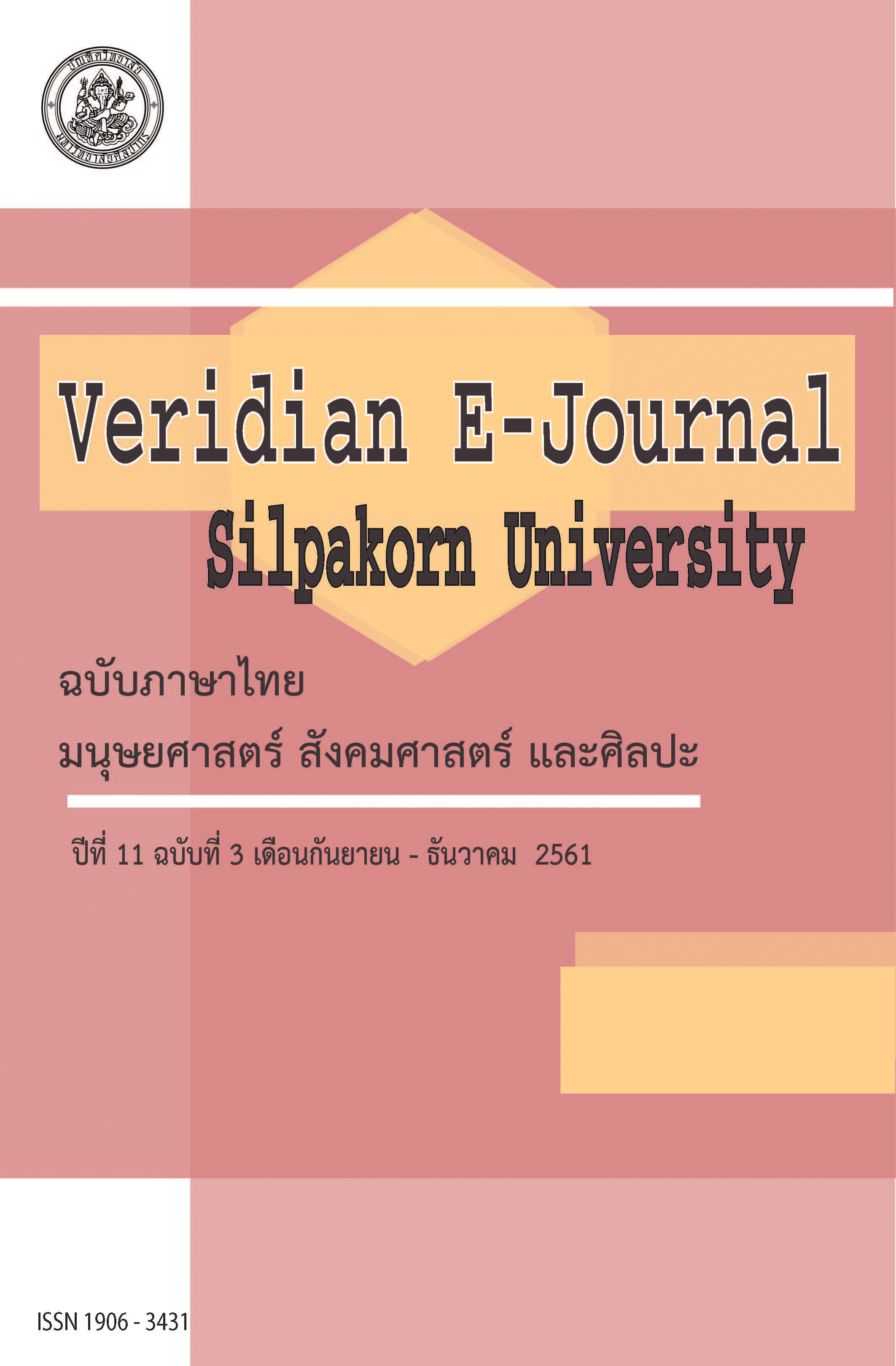นวัตกรรมสิ่งทอจากเส้นใยดาหลาสู่การออกแบบผลิตภัณฑ์แฟชั่นไลฟ์สไตล์ (Inovative Textiles From Etlingera Elatior Fiber To Fashion Lifestyle.)
Main Article Content
บทคัดย่อ
การวิจัยครั้งนี้มีวัตถุประสงค์ เพื่อศึกษาแนวทางการเพิ่มมูลค่าขยะทางการเกษตรโดยการพัฒนาเส้นใยจากต้นดาหลา และศึกษากระบวนการทดลองสกัดสีจากดอกดาหลา และการพัฒนารูปแบบผลิตภัณฑ์แฟชั่นไลฟ์สไตล์ที่เหมาะสมกับสิ่งทอเส้นใยดาหลา โดยการประเมินผลความเหมาะสมของเส้นใย รูปแบบผลิตภัณฑ์จากกลุ่มผู้เชียวชาญทางด้านสิ่งทอ ทางด้านการออกแบบ นักออกแบบ กลุ่มประกอบ และกลุ่มเป้าหมาย โดยใช้เครื่องมือแบบสอบถาม และการสัมภาษณ์
ผลการศึกษาพบว่า การพัฒนาเส้นใยดาหลาเป็นการใช้ส่วนลำต้นที่เหลือทิ้งจากการตัดดอกดาหลาไปขาย ส่วนของลำต้นมีใยที่เหมาะสม โดยจะนำเข้าเครื่องนวดเพื่อให้มีความยืดหยุ่นและมีความนุ่ม หลังจากนั้นนำไปเข้าเครื่องตีใย และนำใยที่ได้ไปเข้าเครื่องตีเกลียวเส้นด้ายในระบบอุตสาหกรรม ซึ่งเส้นด้ายที่ตีเกลียวจะมีส่วนผสมระหว่างใยดาหลาและใยฝ้าย อัตราส่วน 15:85 เพราะใยฝ้ายเป็นตัวผสานเกลียว ซึ่งจะทำให้เส้นด้ายเหมาะแก่การนำไปทอผ้าเพื่อทำผลิตภัณฑ์แฟชั่นไลฟ์สไตล์เช่น เสื้อผ้า กระเป๋าและรองเท้าเป็นต้น ในส่วนกลีบดอกมีการสกัดสีย้อมเพื่อย้อมเส้นด้ายดาหลาและเส้นไหมไทย โดยนำกลีบดอกมาปั่นกับน้ำ ในอัตราส่วนกลีบดอก 1 กิโลกรัม : น้ำ 3 ลิตร กรองด้วยผ้าขาว ได้น้ำสีแล้วนำไปต้มเพื่อย้อมร้อน นำเส้นด้ายดาหลาและเส้นไหม ย้อมเป็นเวลา 1 ชั่วโมง ขณะน้ำเดือดใส่สารส้ม 200 กรัม เพื่อให้ติดสีและมีสีที่สด เสร็จแล้วนำเส้นด้ายมาล้างน้ำสะอาด และแช่ในน้ำผสมสารส้ม อัตราส่วน 3 ลิตร: 200 กรัม เพื่อคงสีที่ย้อมไว้
The objectives of this study were: 1) to explore ways of adding value to agricultural waste by developing the Torch Ginger fiber, 2) to examine the process of testing color extraction from the Torch Ginger flower, and 3) to develop a fashion-lifestyle product model that suits the Torch Ginger textile. The study was based on the information obtained from questionnaires and interviews, by evaluating the suitability of the fiber, a product model from textile experts, the design, the designer, the assembly group, and the target group of consumers.
The results indicated that the stem which remained after cutting off flowers for distribution to the market was used in the development of the Torch Ginger textile. The stem was more suitable than other parts. The stem was transferred to a massage machine to make it flexible and soft. After that, it was put into the fiberglass and the fiber was taken into an industrial yarn-twist machine. The twisted yarns were a mixture of Torch Ginger and cotton wool, in a 15:85 ratio. This is because cotton is a screw thread, which makes the yarn suitable for weaving to make Fashion lifestyle products such as clothes, bags and shoes, etc. Dye was extracted from the petals to dye the Torch Ginger yarn and the Thai silk yarn. The petals were spun with water in a ratio of 1 kg of petals: 3 liters of water, and filtered through white cloth. This resulted in colored water which was then brought to the boil for hot dyeing. The Torch Ginger and silk threads were dyed for 1 hour by boiling with 200 g of an alum solution to keep the color fresh. Then, the yarn was washed with clear water and soaked in 3 liters of water with 200g of Alum solution to preserve the dye.

